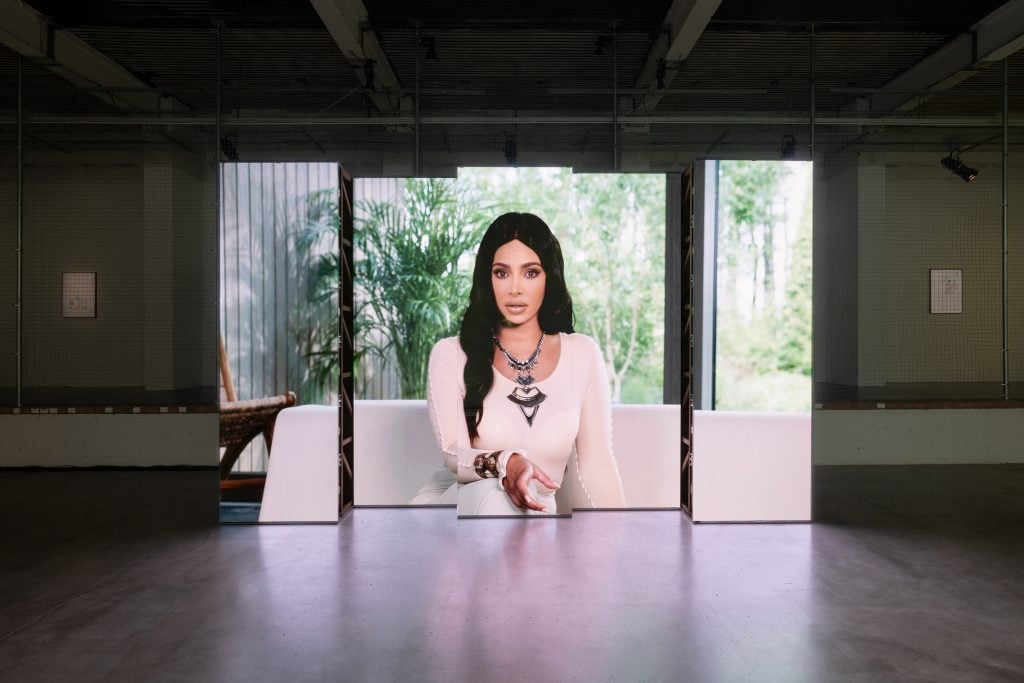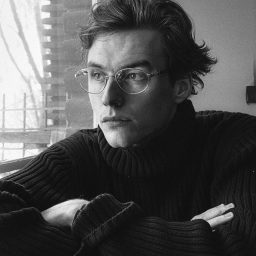This will sound terribly jaded, but, in the spirit of honesty: Christopher Kulendran Thomas, together with longtime collaborator Annika Kuhlmann, presented two types of exhibitions I normally would have walked out of.
On the first floor of their show at Berlin’s KW Institute for Contemporary Art is a political video documentary; on the second an all-too familiar Ab-Ex relaunch. So many biennials later, I’d rather read about a political uprising in a book by an anthropologist than hear about it from an artist. Abstract painting, for its part, can be enjoyable in a straightforward way, but, these days, it is often employed not because of what it is, but because of who made it. These kinds of encounters are often with art that doesn’t need to be art, but rather art that is promoted simply because it supplies a window onto a subject of importance.
“Another World,” where the focus is on the Tamil Tigers, an ex-militant organization once based in northeastern Sri Lanka, is not that. Rather, Kulendran Thomas’ exhibition is so self-conscious as to what it means to think through and with art—and so forceful in that self-consciousness—you cannot help but be intrigued. And so I stayed; it stayed.
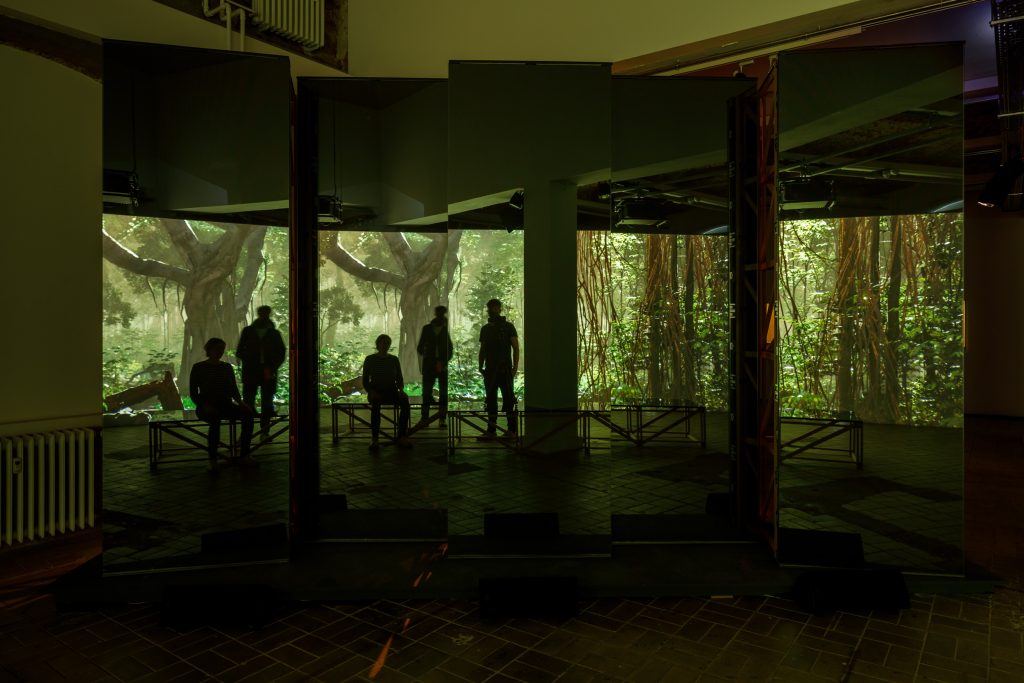
Christopher Kulendran Thomas The Finesse (2022) in collaboration with Annika Kuhlmann. Installation view of the exhibition Christopher Kulendran Thomas. “Another World” at KW Institute for Contemporary Art, Berlin. Photo: Frank Sperling
Kulendran Thomas, a Berlin-based artist of Tamil descent, alongside his German collaborator the curator and producer Annika Kuhlmann, created “Another World” as two parallel exhibitions simultaneously on view at KW and the Institute of Contemporary Arts (ICA), London. Its central work, The Finesse, a newly commissioned video work, is projected onto a mirror, and facing it is another screen showing slow-panning footage from a forest planted by the Tamil Tigers. Sandwiched in between the two are the viewers, collapsing three image-situations into one. The video itself is based partly on early 1990s archive footage featuring a member of the group who speaks with other-worldly eloquence about the Western fictions of democracy and freedom. A democracy should allow us to choose between different systems, she says, but in the West, there is only one. Her wit and charisma are of a type made for political influencing; her TikTok would be irresistible—and this, partly, is what the work is about.
The narrative of Tamil Eelam’s independence movement (a proposed autonomous Tamil state that the Tamil Tigers were fighting for) is neatly slotted into the context of the media spectacle of OJ Simpson’s trial, which took place at the same time—so neatly that I am not sure which parts of the film are authentic, and which not. It is not so difficult to manufacture a VHS grain, recreate an old Yahoo search, nor, it turns out, render a deepfake of Kim Kardashian, who appears in The Finesse, though slower, more immovable, and perfectly mesmerizing. With the same eloquence as the young Tamil, and with reference both to her Armenian roots, and, indirectly, to her early adjacency to the media vertigo of the Simpson trial, Kardashian’s avatar argues that certain people are less prone to believe in the fictions of capitalist hegemony. Certain circumstances—such as that of the Tamils in Sri Lanka, we can infer—require you to be more realistic when it comes to how stories are fabricated as truth in newsrooms and on the internet.
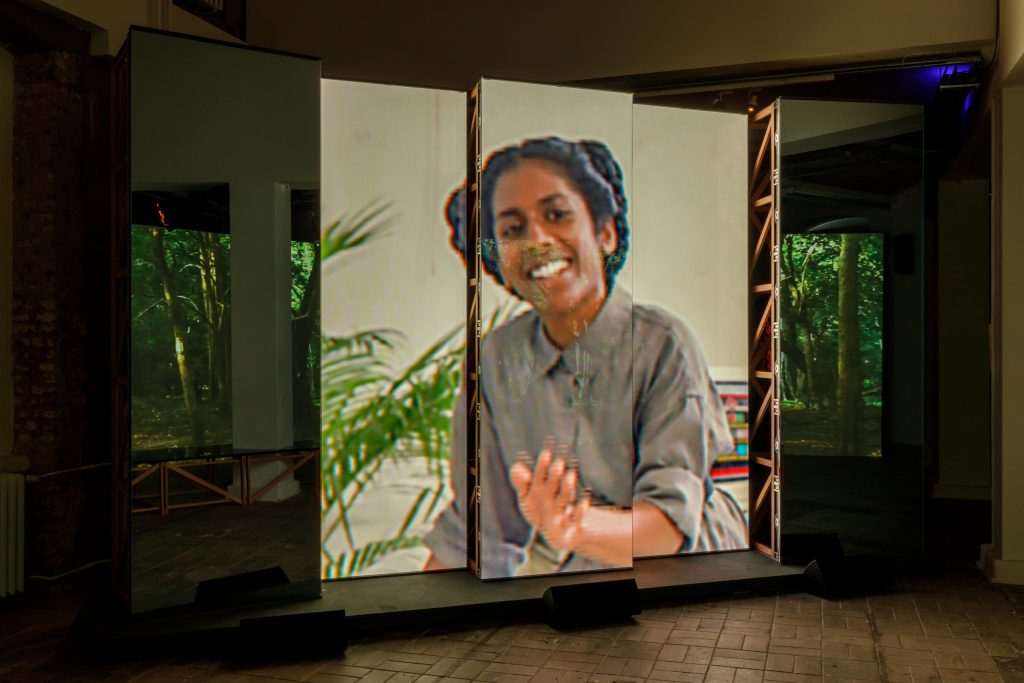
Christopher Kulendran Thomas The Finesse (2022) in collaboration with Annika Kuhlmann. Installation view of the exhibition Christopher Kulendran Thomas. “Another World”
at KW Institute for Contemporary Art, Berlin
2022. Photo: Frank Sperling
In another segment of The Finesse, contemporary recordings follow another young Tamil investing in the legacy of the once-imagined Eelam state, now more than ten years lost. But the possibility of that history and its politics to become wearable as an identity for the young woman in the present is put into relief by a phone call she gets from an older friend or relative. It was a fantasy we had, says the voice on the other end of the line, who questions what it is that the younger generation expects to get out of identifying with it now. And the viewer— themselves caught inside the projection—wonders too.
It is through such sober, whip-smart interjections that Kulendran Thomas and Kuhlmann consistently install self-consciousness into the narrative while smugly escaping the dangers of romanticism. What I like about the work is that it does not allow us to take its politics at face value; rather, it is laced with an irony that has generally not been tolerated in the art world since the DIS-curated Berlin Biennial in 2016 (where Kulendran Thomas also participated). There is a critical tension without which we would risk collapsing into the neo-essentialisms of post-truth. Eloquence, charisma, and charm, too, are art forms, which each cease to function as modes of manipulation once we accept them as such. In parallel, the extent to which these conversations and monologues are scripted, made deepfake, or not, likewise loses importance.
Upstairs, Being Human, a video work from 2019, is screened on a translucent wall, dissecting the space. The rooms on either side of it are lined with the abstract paintings, which, it turns out, are generated by AI and executed by Kulendran Thomas’s studio, as are their sculptural counterparts. Climaxing like a pop song, the screen occasionally lights up to reveal the other side of the room. Art and modernism are part of the same ideological image circuit as Kardashian and Taylor Swift (whose deepfake reflects on the possibility of authenticity in Being Human) and the propaganda machines that would render the Tamil Tigers terrorist insurrectionists, or not. The theoretical implication is that we are completely immersed in the simulacrum, but it is also plain beautiful; as an experience, enchanting.
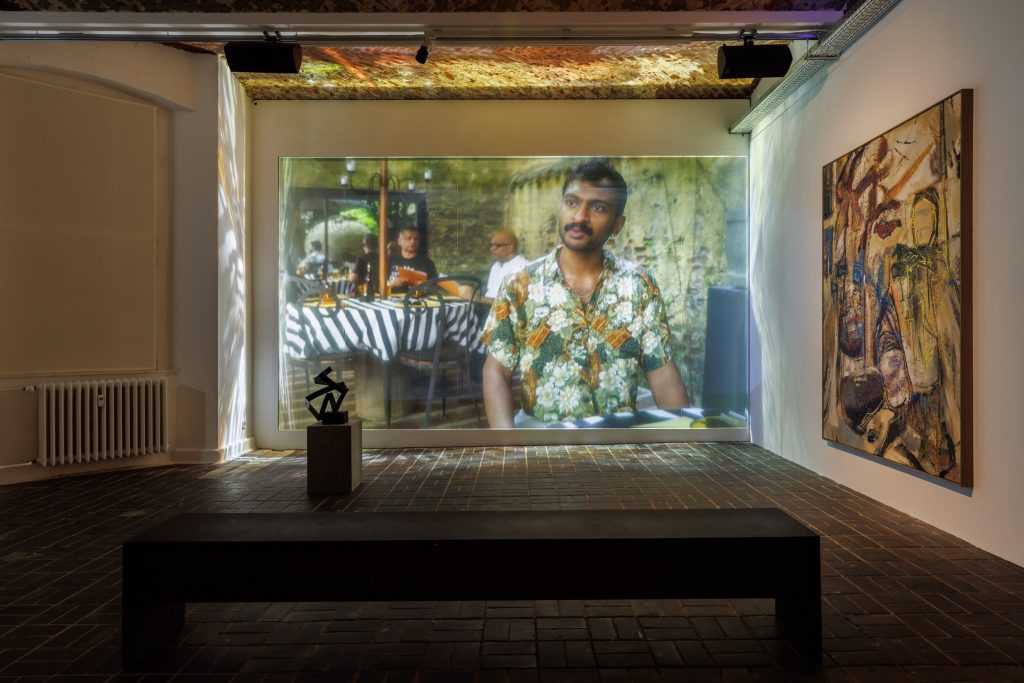
Christopher Kulendran Thomas The Finesse (2022) in collaboration with Annika Kuhlmann. Installation view of the exhibition Christopher Kulendran Thomas. “Another World”
at KW Institute for Contemporary Art, Berlin
2022. Photo: Frank Sperling
In The New York Times, critic Travis Diehl wrote about the London-chapter of the exhibition, a mirror of the KW show. “If Kulendran Thomas genuinely aims to offer new political possibilities, count me as a skeptic. If his goal is to ruin contemporary art, he just might,” he says. Here, Diehl refers to the zombie abstraction that is part of the installation of Being Human, and, perhaps, to the generally unplaceable morality of the tone. But this is far from a threat to contemporary art. Rather, after a summer where structure, relational aesthetics, and good intentions stood in for artworks at ruangrupa’s Documenta 15, “Another World” retains a medial self-consciousness that presents a hopeful glimpse for its future. The element of spectacle in both works—The Finesse peaks in an exhilarating rave scene—might have come across as cheap in its pop appeal, but it is precisely this hint of cynicism that makes both works at once disturbing and intelligent.
In recent years, the discourse around politics and art has seen a loss of distinction between the sphere of representation and reality, taking, for instance, images for actions, depictions, or reflections on violence as that violence itself. But “Another World” does not let reality become subsumed by its image; instead, it asks the audience to continually observe the line between the two, even as it blurs. And the experience of sitting inside of Kulendran Thomas’s infinity mirror, oddly, makes you quite sure of what parts of reality that survive the spectacle of media and what truth rises to the surface of a deepfake. There is so much, in fact: the intelligence and humanity of the protagonists (real or not); the pleasure and fun of imagining another world, and in being surrounded by images of it; how political dreams and artful fictions can overlap in certain moments, and in others, crucially, diverge. And while you may not be able to spot the difference, you will feel it.
“Another World” is on view through January 22, 2023, at the Institute for Contemporary Arts, London, and through January 15, 2023, at KW Institute for Contemporary Art, Berlin.
